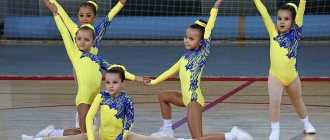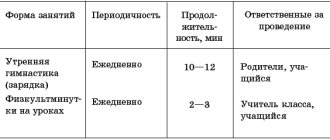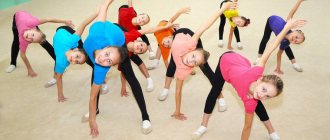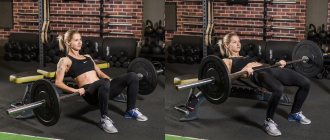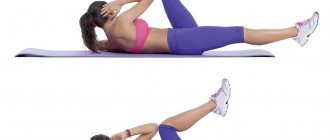Morning exercises are one of the mandatory items in the daily routine of both country health camps and city day camps for schoolchildren. Simple sets of exercises accessible to every child are selected and written into the camp program before opening.
Exercises are carried out before breakfast in the open air to rhythmic, mood-improving music that charges with vigor and positive emotions. Easy-to-follow, effective sets of exercises for warming up, training individual muscle groups, developing correct posture and stretching are in our article.
Exercise sets
Sets of exercises for children aged 7-9 years are made up of play forms of a simulating nature, which are readily accepted by children. With their movements they should depict the actions of machines, people, plants, animals. The very name of the exercise already gives an idea of its essence. Reproducing the noise of a motor, forest, etc. allows you to correctly regulate your breathing during exercise. These same exercises can later be performed counting.
For children 9 years old, such exercises may no longer have the same effect, so you can use them with a set of exercises for children 10-12 years old with some relief.
After morning exercises, as a rule, you need to do water procedures. It is well known what an important role they play as a hygiene product. Water procedures are even more important as a means of hardening the body.
In combination with air baths during gymnastics, you can ensure that children become less susceptible to colds.
In any camp it is possible to install showers or other simple installations for water procedures. It is necessary to provide in advance the conditions under which boys and girls could dry themselves, douse themselves with cold water, or plunge into the river every day after gymnastics under the guidance of a counselor or teacher.
Its execution depends on how morning exercises are carried out. If the leader knows the exercises well, can demonstrate them, give the command loudly and correctly, then the entire squad will perform the exercises clearly and consistently.
We remind you of a number of methodological techniques for conducting morning exercises.
After a demonstration and a brief explanation, demand acceptance of the starting position with the command: “Accept the starting position (name which one)!”
Often showing and explaining turns into a long procedure. And in the cool of the morning, standing without moving is not very pleasant for children. And in order to use time more efficiently, experienced leaders, while explaining and demonstrating at a slow pace, suggest repeating the exercise after yourself one or two times, after which the command follows to start it: “Begin exercise left (right)!” To finish the exercise, instead of the last (fourth) or eighth) count to command: “Detachment, stop!”
You should not do the exercises yourself together with the squad for a long time, but you just need to monitor the correct execution and rhythmically count if the exercise is not performed to music.
To ensure that the children do not get lost and perform the exercises consistently, the leader must learn to perform the exercises together with them “mirror” in relation to the children. For example, give the group the command to start tilting to the left, and start tilting to the right yourself.
Rules and features
Gymnastics at home for girls should be selected in accordance with the age of the child. Children aged 3-4 years will not be able to perform complex movements, since they do not yet know how to properly control their body. And the main task of the training process is to learn the basics.
Also, tasks are divided according to gender: for boys and girls. For boys, a complex is mainly selected aimed at developing endurance, and for girls - for the active development of plasticity.
Creating an individual program requires taking into account the personal characteristics of the child. Some children are able to easily complete tasks designed for older girls and boys.
A child does not always want to do gymnastics with joy, but in order to overcome this obstacle it is better to take on board a few tips from a psychologist:
| It is worth doing exercises with adults. | One of the adults definitely needs to find time to do some simple exercises with their child. |
| Cheerful invigorating music to accompany. | Even adults don’t want to do gymnastics in silence; let the child choose a melody that is pleasant to him. |
| Always look for incentive. | A beautiful figure and slender legs can be an incentive for a young beauty, and we can also say that thanks to exercise, excess weight is not a problem. |
| Find someone to imitate. | No idols, but only a role model, for example, a favorite actor or singer can be the one who encourages the child to do exercises. |
| Exercise for good health and strength. | A strong person can easily protect anyone who may be offended. |
| 5 exercises to warm up the muscles and about 7 for the main complex. | For children of preschool and primary school age, such a simple exercise will be enough. It will take about 20 minutes. During this time, the child will not get tired and completing tasks will not be a burden for him. |
| Frequently start conversations with your child about health. | It is important to tell your child why exercise is beneficial. You can include cartoons on this topic. |
| Sports corner in the house. | If possible, arrange a sports corner in the baby's room. Choose a time to visit the trampoline center or any other sports attraction. |
| Develop a complex based on the child’s preferences. | In order for the child to enjoy doing the exercises, when developing the complex, take into account the child’s preferences. For example, if he loves the ball, then you can choose exercises with the ball, if he loves the uneven bars, do exercises on the sports field. |
Parents should be prepared for the fact that sports at home or in the gym is a load that provokes fatigue and muscle soreness. In the first weeks there may be tears and complete refusal to study, but the constant support and attention of parents will help overcome all difficulties.
Leg exercises
Jumping rope - forward/backward on two legs, on one leg. At first, children will need their parents' help to understand the essence of jumping rope. Then they can do this exercise on their own.
Jump on two legs, rotating the rope forward and then backward, perform 50 times. Jumping on one leg, rotating the rope forward, 20 times on each leg. If a child is over 10 years old and is in good athletic shape, then the number of jumps on two legs forward/backward can be increased to 100, and on one leg - 30-40 times on each.
Jumping hoops for children under 4 years of age . This exercise will help young children, starting from 1.5 years old, learn to jump on two legs. Buy 5-7 pieces of medium-sized colored hoops, place them on the path one after another and show the children how to jump from one ring to another.
If children do not know how to jump, then parents should help them by holding them by the waist. If the child is already jumping confidently, then increase the distance between the hoops so that he can jump long.
Squat jumps (“frogs”). Starting position: crouching - squatting, keeping your knees together, resting on your hands. Jump high up, straighten your back and straighten your arms up, then immediately squat down to the starting position and immediately repeat the next jump. 2 approaches with rest 15 times.
Game charging
To avoid monotony, which can dull children’s interest in exercise, you need to diversify it by changing and complicating individual exercises (complexes) after 10 days. It’s good to do morning exercises once or twice a week, consisting entirely of games—game exercises.
This is an unusual exercise in our understanding, but deviation from the canons can play a positive role, because the game contributes to a cheerful mood in children and increases emotionality. These are mainly team games, which are usually held at squad exercises and training camps. They are selected in such a way and in such a sequence that movements during the game resemble gymnastic exercises in regular exercises. But the conduct should be different from games in squad classes:
- You need to meet the allotted time for charging—15-20 minutes. Therefore, the games should be familiar, well-learned by children. The duration of each game, including preparation, is 3-4 minutes. A simple calculation of time says that, with some exceptions, the game cannot be played more than once;
- the necessary equipment must be prepared in advance and located at the venue. Before conducting exercise games in the morning, the counselor must check (rehearse) the games at squad lessons. This will tell him whether the detachment and he himself as a leader are ready to carry it out;
- In order to arouse the children's interest, an accurate record of the places occupied by the units (teams) and the mistakes made by the players is carried out. This task can be accomplished if there is a judge near each link (from among the senior or temporarily released pioneers or an educator). We must not forget that the number of players in each team must be the same.
For the convenience of calculating the results, it is necessary to agree that points are awarded to the teams according to the places taken: 1st place - two points, 2nd place - four points, etc. And for each mistake, the team is awarded one point. Thus, a link will take a better place if it ends up with fewer points. It is better to sum up the general results at the morning meeting, and announce the results of each game immediately.
Contraindications to sports
Each sport has a number of contraindications, and before sending your child to one or another section, you need to consult with your pediatrician and undergo the examinations recommended by him. We list the main conditions that may cause restrictions when choosing a sports section:
- Myopia
- Flat feet
- Scoliosis
- Instability of the cervical vertebrae
- Peptic ulcer
- Asthma
- Diseases of the lungs and respiratory system
- Diseases of the cardiovascular system
- Diabetes
- Conditions after injury
It is clear that this is a very approximate list, and even with serious illnesses, you can find a sport that is not only possible, but also necessary. After all, physical activity is necessary for a growing person for the harmonious development and strengthening of the body. With the help of a pediatrician and a competent coach, you can find the optimal sport for your child.
